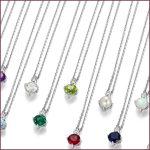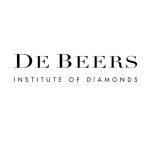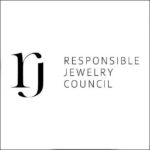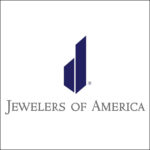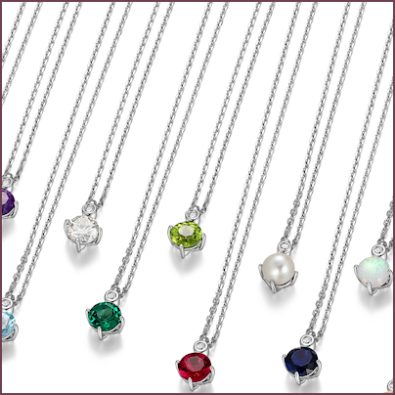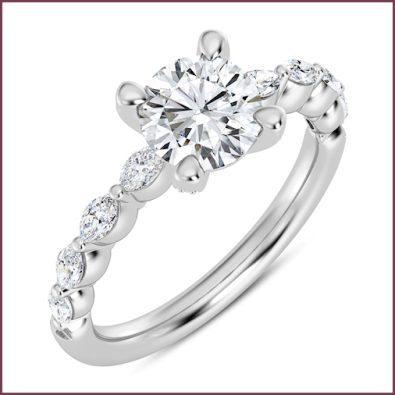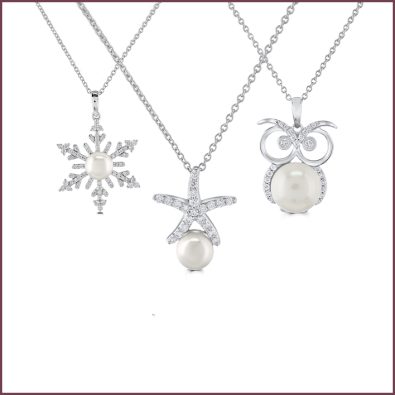Capitalizing On The Power Of Women
Women are powerful consumers, spending more than $20 trillion worldwide, $7 trillion in the United States alone. And that consumer power is expected to grow exponentially: Over the next decade, women are expected to control two-thirds of consumer wealth in the U.S. They also will make 85% of all brand purchases, all according to She-conomy.
 Like many industries, the fine jewelry trade is studying the female consumer to understand how to effectively market and sell to her. Traditionally, jewelers have sold primarily to men, considering women a secondary influencer. But research shows women are no longer just the recipients of jewelry gifted to them by the men in their lives. Modern women are buying jewelry for themselves in record numbers, making the self-purchasing female a huge growth area for the fine jewelry industry.
Like many industries, the fine jewelry trade is studying the female consumer to understand how to effectively market and sell to her. Traditionally, jewelers have sold primarily to men, considering women a secondary influencer. But research shows women are no longer just the recipients of jewelry gifted to them by the men in their lives. Modern women are buying jewelry for themselves in record numbers, making the self-purchasing female a huge growth area for the fine jewelry industry.
Exploring this demographic in a recent Plumb Club webinar, experts Stephanie Holland, author and founder of She-conomy, and retail marketing consultant Andrea Hill of the Chicago-based Hill Management Group shared important market research and actionable steps jewelers can use to effectively reach female consumers.
New Generation of Consumers
The landscape of the jewelry industry has changed dramatically, with only 48% of U.S. adults married today, as  compared to 78% in the 1950s, cites Holland, whose advertising background spans more than 30 years, with a focus on marketing to women.
compared to 78% in the 1950s, cites Holland, whose advertising background spans more than 30 years, with a focus on marketing to women.
Because the jewelry industry has built a paradigm around engagement rings, it has some unlearning to do, says Hill, who provides strategic consulting, professional development, branding, and marketing services to small and mid-sized businesses. “As an industry, we focused on diamonds, the 4Cs, and selling by certificate, all techniques that work when selling to men because the social construct said they had to buy a big engagement ring. Now, that social construct has diminished. But jewelry stores are still designed around how men buy.”
Market research finds that 51% of female consumers buy jewelry for themselves, 14% buy for their partner/spouse, and 17% make purchases with their significant other. This means women are purchasing and influencing 81% of all jewelry sales, cites Holland. Because the customer paradigm has shifted from men to women, jewelry manufacturers and retailers must understand the female market.
Marketers have a lot of work to do, as 91% of women feel advertisers don’t connect with them, finds She-conomy research. “Most jewelry manufacturers and retailers are male-owned and operated. This is further exacerbated by the fact that advertising is also a male dominated industry,” says Holland. “There’s a big disconnect, when you have 89% of advertising creative directors male, and 81% of consumers female.” She reports that nearly three quarters of women are willing to walk away from brands that don’t listen to them.
Understanding Their Motivations
To connect effectively with female consumers, you must know what motivates them, says Holland. Among the top reasons a woman buys jewelry for herself, multiple industry studies find, are: to get what she wants, to reward herself, to commemorate a memory, and just because.
When communicating to women don’t think in terms of ages, but in life stages. “A 40-year-old woman could easily have a toddler at home or a child going to college, no children at all or still single”, describes Holland. “While they are all 40, their wants, desires, and where they are in life are very different.”
 Knowing what is important to women today is key to communicating with them appropriately. “The political environment is such that women have opinions and those opinions have an impact on their purchasing behaviors,” says Holland. “Women trust brands whose company culture matches their own beliefs, as the company’s culture bleeds into the essence of the brand, product and service.”
Knowing what is important to women today is key to communicating with them appropriately. “The political environment is such that women have opinions and those opinions have an impact on their purchasing behaviors,” says Holland. “Women trust brands whose company culture matches their own beliefs, as the company’s culture bleeds into the essence of the brand, product and service.”
The terminology with how women perceive themselves is changing. Holland cites evidence of this in the increasing number of ads using words like “empowerment” or redefining what “beauty” means.
Different Shopping Styles
The differences between men and women are profound when it comes to marketing and selling, says Hill, who notes that there is a lot of good social science behind this.”
She offers a chart that compares men and women:
Men watch objects, women faces.
Men are interested in the buy, women the hunt.
Men are looking for function, women emotion.
Men need objective information, women both objective and subjective.
Men want functional details, women both specs and emotional and social cues.
Men shop for what they need now, women both now and the future.
Men relate things to themselves, women to the relationships between things.
Men think of space as categorized, women think of it as relational.
Men are linear shoppers, women organic.
Hill advocates jewelers consider these differences when strategizing how to attract women to their store, keep them there longer, and retain them after the sale. “If you want to sell to women, you must appeal to them, engage them, and relationship-build with them differently than men.”
there longer, and retain them after the sale. “If you want to sell to women, you must appeal to them, engage them, and relationship-build with them differently than men.”
She suggests 13 methods to do just that: never stereotype, advocate beliefs, conversations over advertising, use social proof, maximize website appeal, less categories more experiences, collaborate instead of assist, avoid jewelry rules, invest in relationships, make excuses to engage, and help her own it!
To delve deeper into this topic, watch a full recording of The Plumb Club webinar: Understanding Women: Effective Marketing & Sales Strategies to Reach Today’s Savvy Female Consumer, with Stephanie Holland and Andrea Hill here.
